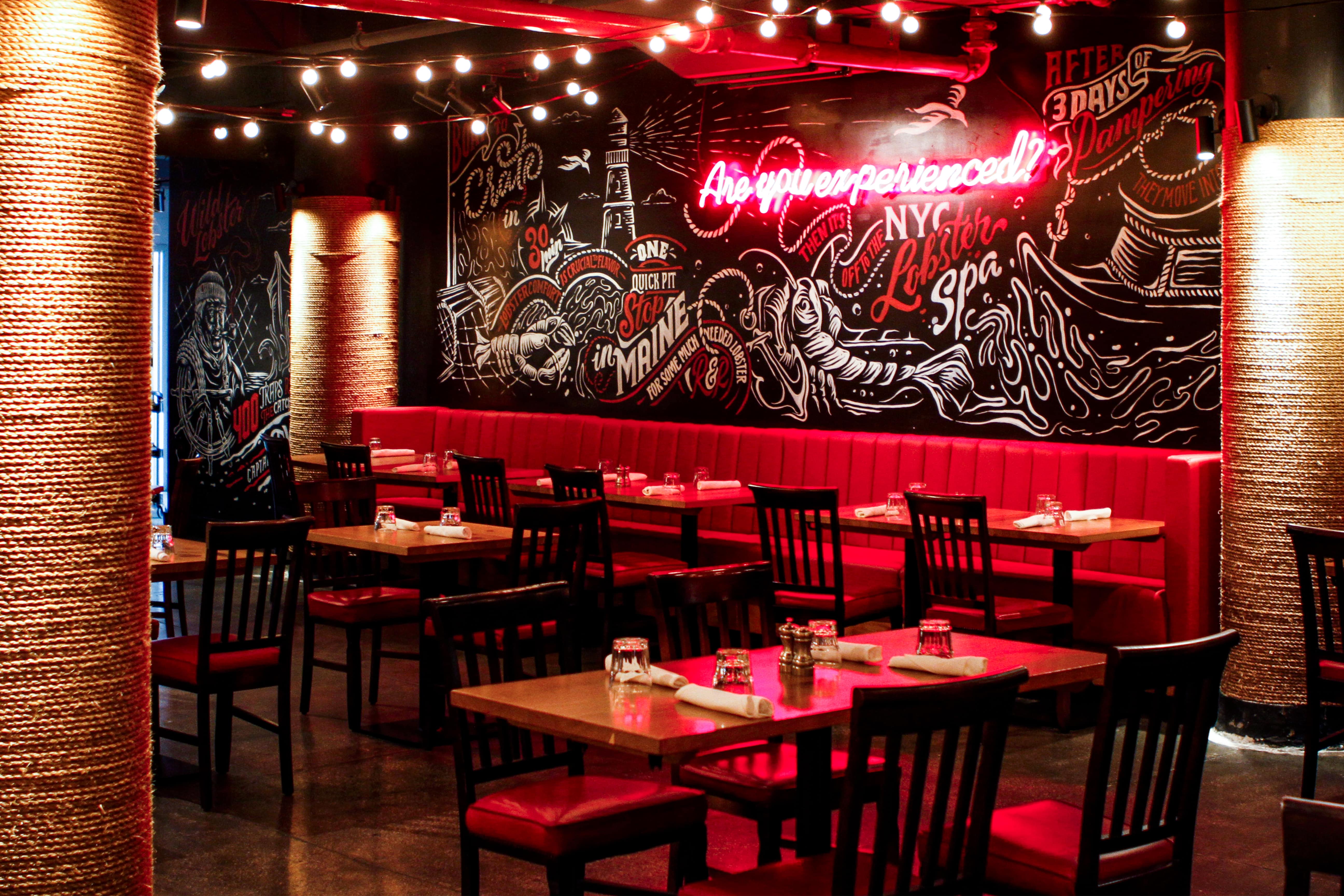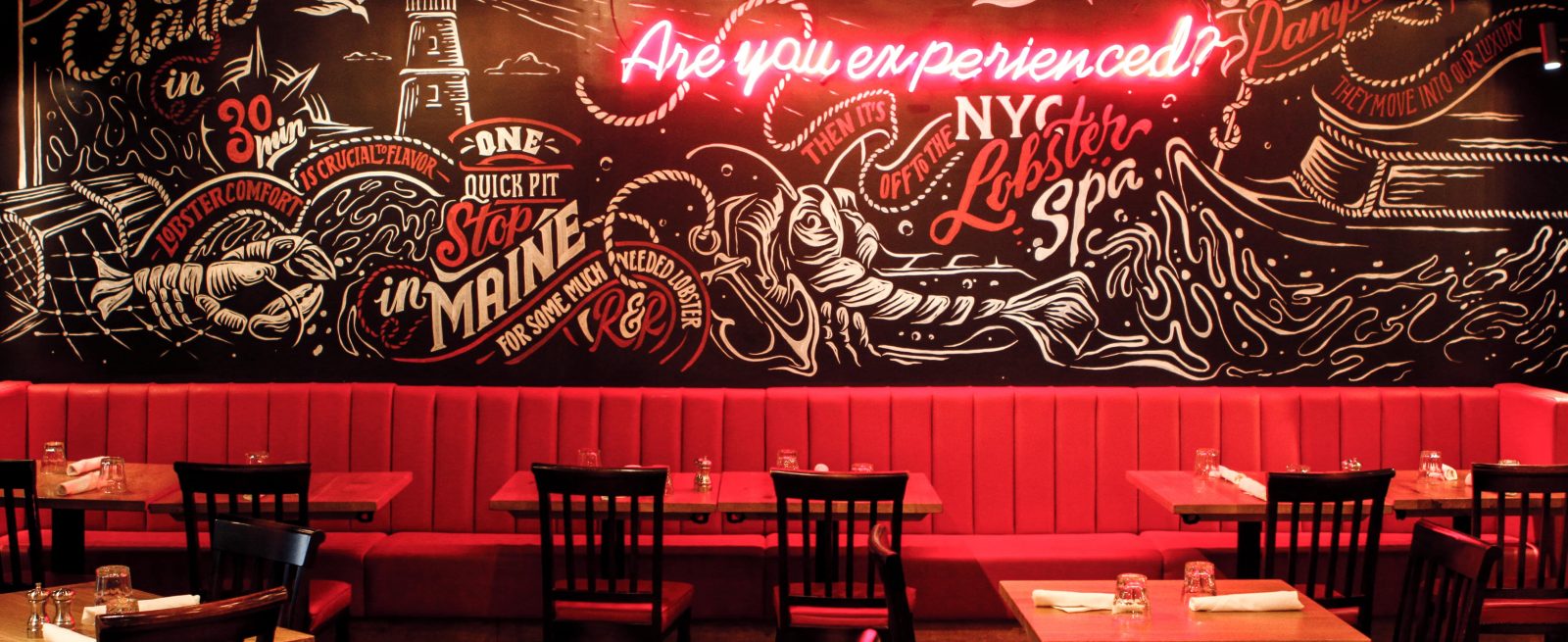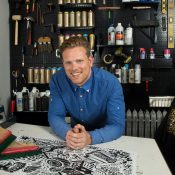How Artists Can Help to Tell Brand Stories in Restaurants
4 Min Read By Jonathan Kenyon
One of the most famous examples of an artist-restaurant collaboration is Damien Hirst’s Pharmacy in London.
It was an art world phenomenon in the 1990s, with visitors including global superstars David Bowie and Madonna, who came to experience interiors designed by Hirst which even included a number of his major works. The restaurant was opened in collaboration with Matthew Freud, Liam Carson of the Groucho Club and Momo’s, and Jonathan Kennedy, one of the founders of Quo Vadis. Its convincing pharmaceutical appearance even led to threats of legal action by the Royal Pharmaceutical Society for misleading the public and prompted one woman to call Pharmacy to ask if they had any aspirin. Pharmacy closed in 2003, but its legend lives on.
It’s easy to question whether artists and restaurant brands are two worlds forever divided by different values, or if they are meant to work together with the potential for a positive relationship.
Andy Warhol would have been proud. He famously said: “Making money is art and working is art and good business is the best art,” which sums up the potential of commerce and art to have a mutually beneficial effect. It’s easy to question whether artists and restaurant brands are two worlds forever divided by different values, or if they are meant to work together with the potential for a positive relationship.
In fact, restaurant and artist collaborations have had a long and successful history, predating ventures from Brit Art’s enfant terrible. Look at the Kronenhalle in Zurich, where works by artists such as Rodin adorn the walls. Fast forward to today and take a peek inside Mercado Little Spain. The 35,000-square-foot dining destination and market at Hudson Yards showcases the best of Spanish cuisine, enhanced by bespoke tiles created by Vives Ceramica, murals by Spanish artists, and furniture by some of Spain’s most talented designers. These collaborations between artist and restaurant are not easy.
Artistic credibility is hard-won and any suggestion of inauthenticity from either a restaurant brand or an artist can cause lasting damage. But if executed in the right way, they can create an experience and a destination, helping the restaurant to stand out in a crowded sector.
How then can restaurant brands work successfully with artists?
Meaningful Partnerships
In the early days it worked for brands simply to buy or commission work. More recently we have seen brands adopting artists as brand ambassadors – famously Diageo linked Sean Combs with Cîroc vodka to achieve impressive commercial results.

Of course, collaborating with artists such as Sean Combs or Damien Hirst is a rare opportunity. Restaurants can commission artists to work with them to achieve impressive commercial results and there is a place for this approach. But in an age of increasing skepticism the most successful collaborations are those involving a more meaningful partnership between artist and restaurant brand – working together from conception to execution and finding solutions that can fundamentally shape it.
If restaurant brands thread artists directly in their workflow right from the start, it enables deeper collaborations which can grab public attention imaginatively, communicating brand stories effectively, creating a destination which will help put them on the map. Threading artists directly through a brand’s innovation and discovery process where they can help to innovate, stress-test concepts, and inject fresh thinking into its process can deliver impressive results.
A Place Where Art Can Thrive
These deeper collaborations are rich in opportunity for restaurant brand and artist alike – but they’re not without risk. It can be hard for artists to decide which restaurant brand is right for them to partner with and it can be just as challenging for restaurant brand managers to cope with the uncertainty that accompanies partnering with artists. How can they find the right artist to represent their restaurant brand? And how can they create a place where art can thrive?
Threading artists directly through a brand’s innovation and discovery process where they can help to innovate, stress-test concepts, and inject fresh thinking into its process can deliver impressive results.
One way to address this challenge is to tap into a creative community where artists from a variety of backgrounds and disciplines are already working together and with brands – a sort of modern-day Warhol’s Factory if you will.
Creative Network
The Factory in New York was a home for artists, muses and anyone Warhol found interesting, but it was also a creative network which provided a direct line between commerce and art. By tapping into this kind of established artistic community of designers, thinkers, makers and artists, restaurant brands can access a range of artistic specialisms and a variety of skills which will produce truly original ideas.
This hub of artistic expression could help to take commercial collaboration between restaurant brand and artist to another level, by using the breadth and depth of talent in a collective to pair the right artists with each specific challenge.
Even with this network in place, restaurant brand and artist partnerships are difficult to get right, but with a deeper more meaningful collaboration, where artists are seeded in the workflow from the beginning, it can result in amazing art and exciting commercial opportunities. I’m sure Damien Hirst would agree with Andy Warhol, that the best art is also good business.


